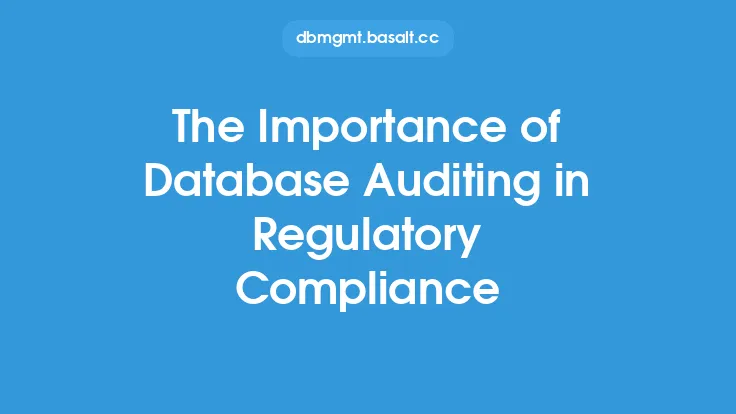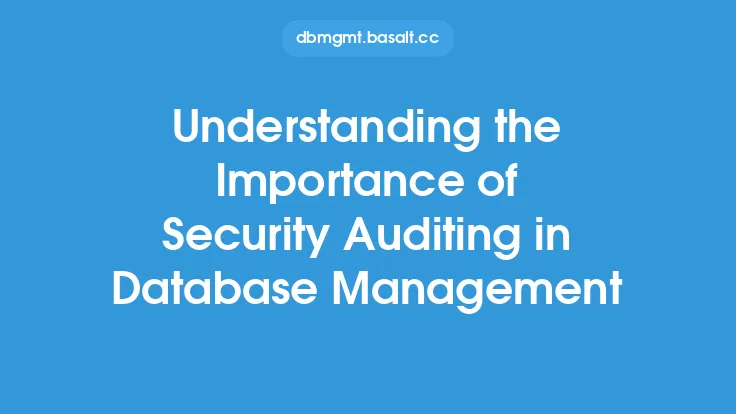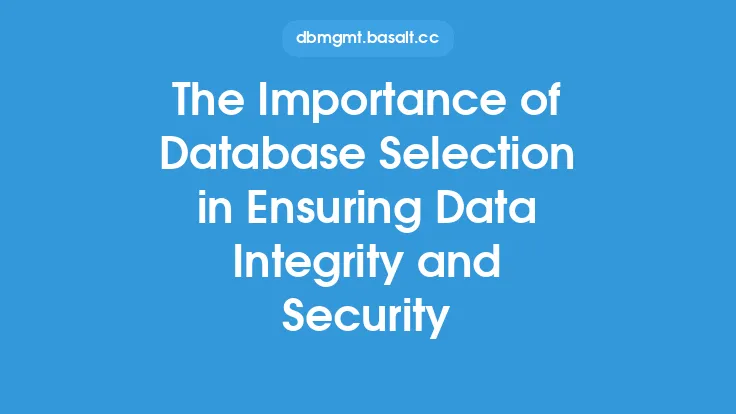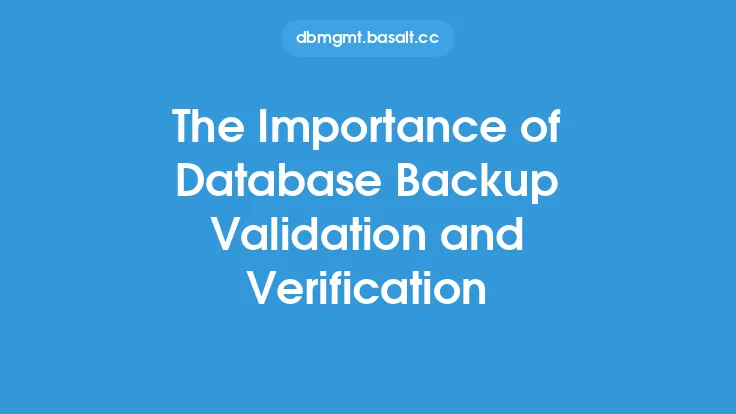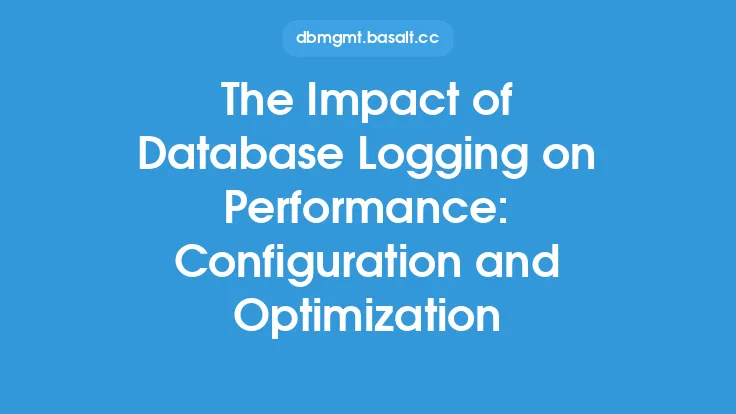Auditing and logging are essential components of database compliance, as they provide a clear and transparent record of all activities that occur within a database. This is crucial for ensuring the integrity and security of sensitive data, as well as for meeting regulatory requirements. In this article, we will delve into the importance of auditing and logging in database compliance, and explore the various techniques and tools that can be used to implement these critical functions.
Introduction to Auditing
Auditing refers to the process of tracking and recording all changes, updates, and other activities that occur within a database. This includes monitoring user activity, such as logins, queries, and data modifications, as well as system-level events, such as backups, restores, and configuration changes. Auditing provides a clear and transparent record of all database activities, which can be used to detect and respond to security incidents, troubleshoot performance issues, and demonstrate compliance with regulatory requirements.
Introduction to Logging
Logging refers to the process of recording and storing information about database events, such as errors, warnings, and other system-level messages. Logging provides a detailed record of database activity, which can be used to troubleshoot performance issues, identify security vulnerabilities, and optimize database performance. Logs can be used to track a wide range of events, including user activity, system errors, and database changes, and can be used to generate reports, alerts, and other notifications.
Benefits of Auditing and Logging
The benefits of auditing and logging in database compliance are numerous. Some of the key advantages include:
- Improved security: Auditing and logging provide a clear and transparent record of all database activities, which can be used to detect and respond to security incidents.
- Enhanced compliance: Auditing and logging provide a detailed record of database activity, which can be used to demonstrate compliance with regulatory requirements.
- Better troubleshooting: Auditing and logging provide a detailed record of database activity, which can be used to troubleshoot performance issues and identify the root cause of problems.
- Improved performance: Auditing and logging provide a detailed record of database activity, which can be used to optimize database performance and identify areas for improvement.
Types of Auditing and Logging
There are several types of auditing and logging that can be used in database compliance, including:
- Database auditing: This involves tracking and recording all changes, updates, and other activities that occur within a database.
- System logging: This involves recording and storing information about system-level events, such as errors, warnings, and other system-level messages.
- Application logging: This involves recording and storing information about application-level events, such as user activity, errors, and other application-level messages.
- Security logging: This involves recording and storing information about security-related events, such as login attempts, access requests, and other security-related activities.
Tools and Techniques for Auditing and Logging
There are several tools and techniques that can be used to implement auditing and logging in database compliance, including:
- Native database auditing tools: Most databases provide native auditing tools, such as SQL Server Audit, Oracle Audit, and MySQL Audit.
- Third-party auditing tools: There are several third-party auditing tools available, such as Audit Vault, DB Audit, and LogRhythm.
- Logging frameworks: There are several logging frameworks available, such as Log4j, Logback, and SLF4J.
- Log management tools: There are several log management tools available, such as Splunk, ELK Stack, and Loggly.
Best Practices for Auditing and Logging
There are several best practices that should be followed when implementing auditing and logging in database compliance, including:
- Configure auditing and logging to capture all relevant events and activities.
- Store audit logs and log files in a secure and tamper-evident manner.
- Regularly review and analyze audit logs and log files to detect and respond to security incidents.
- Use logging frameworks and log management tools to simplify log collection, storage, and analysis.
- Implement retention policies to ensure that audit logs and log files are retained for the required period.
Challenges and Limitations of Auditing and Logging
There are several challenges and limitations that should be considered when implementing auditing and logging in database compliance, including:
- Performance impact: Auditing and logging can have a significant impact on database performance, particularly if not configured correctly.
- Storage requirements: Audit logs and log files can require significant storage space, particularly if retention policies are not implemented.
- Complexity: Auditing and logging can be complex to configure and manage, particularly in large and distributed database environments.
- Security: Audit logs and log files can be vulnerable to security threats, such as tampering and unauthorized access.
Conclusion
In conclusion, auditing and logging are essential components of database compliance, providing a clear and transparent record of all activities that occur within a database. By implementing auditing and logging, organizations can improve security, enhance compliance, and optimize database performance. However, there are several challenges and limitations that should be considered, including performance impact, storage requirements, complexity, and security. By following best practices and using the right tools and techniques, organizations can overcome these challenges and ensure that their databases are secure, compliant, and well-performing.
